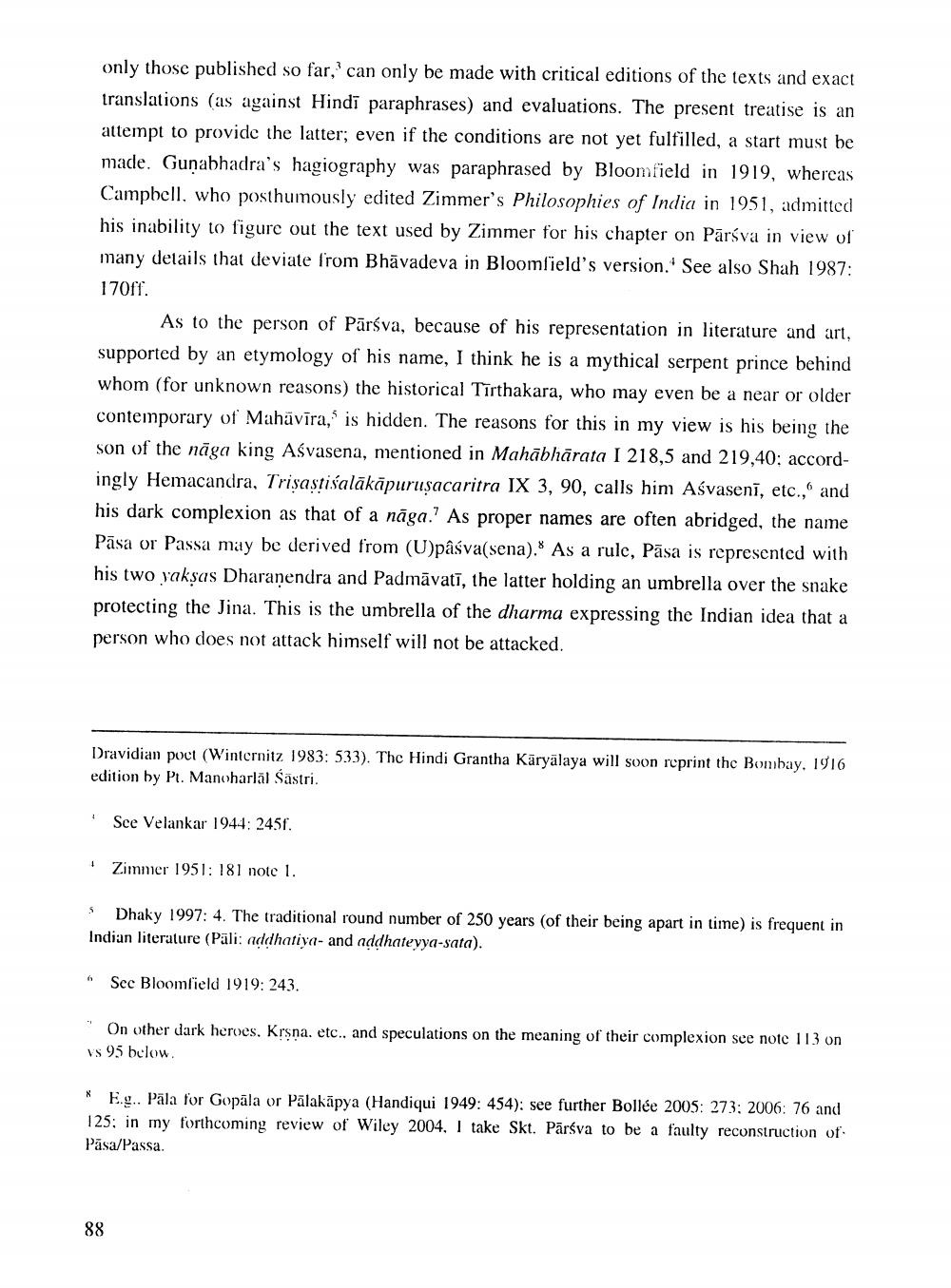________________
only those published so far,' can only be made with critical editions of the texts and exact translations (as against Hindi paraphrases) and evaluations. The present treatise is an attempt to provide the latter; even if the conditions are not yet fulfilled, a start must be made. Gunabhadra's hagiography was paraphrased by Bloomfield in 1919, whereas Campbell, who posthumously edited Zimmer's Philosophies of India in 1951, admitted his inability to figure out the text used by Zimmer for his chapter on Pārsva in view of many details that deviate from Bhāvadeva in Bloomfield's version. See also Shah 1987: 17011.
As to the person of Pārsva, because of his representation in literature and art, supported by an etymology of his name, I think he is a mythical serpent prince behind whom (for unknown reasons) the historical Tīrthakara, who may even be a near or older contemporary of Mahāvīra," is hidden. The reasons for this in my view is his being the son of the nāga king Aśvasena, mentioned in Mahābhārata I 218,5 and 219,40; accordingly Hemacandra, Trisastiśalākāpuruşacaritra IX 3, 90, calls him Aśvaseni, etc., and his dark complexion as that of a nāga.? As proper names are often abridged, the name Pāsa or Passa may be derived from (U)pâśva(sena). As a rule, Pāsa is represented with his two yakşas Dharanendra and Padmāvatī, the latter holding an umbrella over the snake protecting the Jina. This is the umbrella of the dharma expressing the Indian idea that a person who does not attack himself will not be attacked.
Dravidian poet (Wintcrnitz 1983: 533). The Hindi Grantha Kāryalaya will soon reprint the Bombay, 1916 edition by Pt. Manoharlal Sastri.
Sce Velankar 1944: 245f.
+ Zimmer 1951: 181 note 1.
5 Dhaky 1997: 4. The traditional round number of 250 years (of their being apart in time) is frequent in Indian literature (Pāli: addhatiya- and addhateyya-sata).
* Sec Bloomfield 1919: 243.
On other dark heroes, Krsna. etc.. and speculations on the meaning of their complexion see note 113 on vs 95 bclow.
* Eg.. Pāla for Gopāla or Pālakāpya (Handiqui 1949: 454): see further Bollée 2005: 273: 2006: 76 and 125; in my forthcoming review of Wiley 2004, I take Skt. Pārsva to be a faulty reconstruction of Pāsa/Passa.
88




